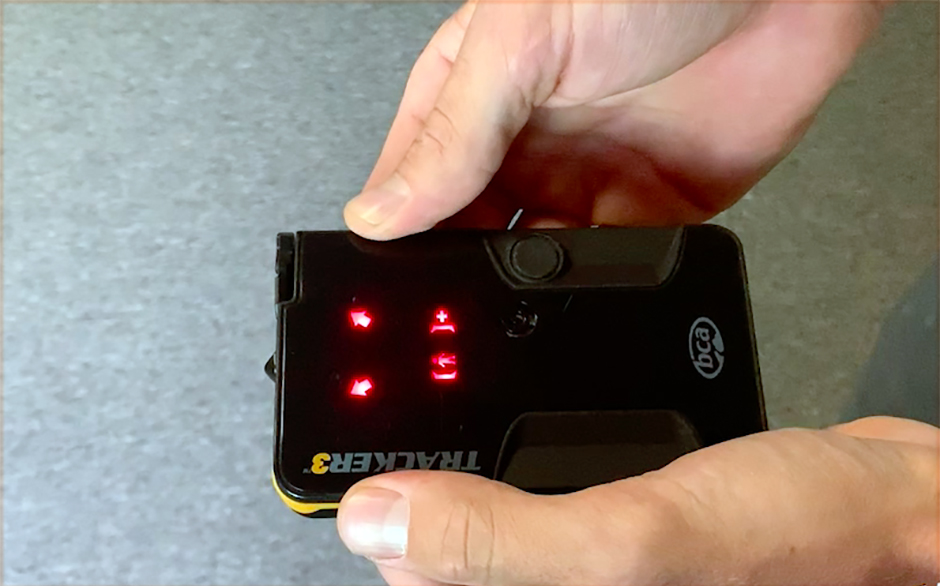Rechargeable Lithium-ion Batteries Impact Transceivers
Recently, technological innovation has presented the public with even more battery options, including USB rechargeable lithium-ion batteries (AA or AAA). While these new products may be beneficial in most day-to-day life, the use of the wrong batteries in avalanche transceivers can be life-threatening in the backcountry.
We’re not here to “beat a dead horse” about only using alkaline batteries in your transceiver: we expect you already know this. We would, however, like to raise a big red flag to all backcountry travelers about the dangers of rechargeable lithium-ion batteries and remind you of the threats that accompany using batteries other than alkaline.
Quick-recharging, lithium-ion batteries contain a tiny switching supply that radiates nasty noise, even when they’re not connected to anything. The noise is created by the switches that reduce the 3v lithium power to the 1.5v power that is standard output for AAA lithium-ion batteries. Because these batteries have no way to know if power is needed, they are constantly running and therefore emitting electromagnetic noise. This regulator does an amazing job of delivering the 1.5v of power that is needed–until the battery is completely dead: the consequence of this is that it leaves no indication of the battery life until it is too late.
We recently tested the impacts of rechargeable lithium-ion batteries when used in an avalanche transceiver and the results were concerning. In transmit mode, the transceiver seemed to be relatively unaffected, as the outgoing signal was much stronger than the noise created by the batteries. When switched to search mode, however, the avalanche beacon became ultimately useless. The noise from rechargeable lithium-ion batteries caused the transceiver to display multiple burials between one and three meters away. Eventually, the transceiver would lose these signals until the display lights (indicating “SE” for search mode) came back on, drawing additional power from the rechargeable lithium-ion battery, which caused a spike in noise and initiated another feedback loop of false signals. With this handicap, the searching transceiver was unable to identify transmitting devices until they were within four meters, yet it continued to be distracted by the noise, making fine searching nearly impossible.
We used an analog transceiver to identify the level of noise coming from these batteries. An Ortovox F1 Focus analog beacon in search mode picked up the noise radiating from the batteries at about a half of a meter and maintained a steady shriek at about twenty centimeters.
With more and more rechargeable lithium batteries going into the backcountry in phones, cameras, and GPS locators, it is essential that these batteries do not end up in, or even near, your transceiver.
Non-rechargeable lithium batteries hold their own threats.
While they don’t emit electromagnetic noise that will disrupt your transceiver, non-rechargeable lithium ion batteries have their own set of issues. They are manufactured to operate at different voltages that can damage the electronics in your device. Many lithium batteries are 1.8 volts, like the Energizer Ultimate Lithium, or even 3.7 volts, like the Trustfire Lithium Battery. Transceivers are engineered with some leeway, but they are designed to operate with 1.5-volt alkaline batteries. This difference in voltage when multiplied by the number of batteries is dangerously close to or completely exceeds the maximum voltage capacity of the electronics. Too much voltage can cause critical electronic failure. If you operate your device with lithium batteries and are fortunate enough to avoid critical failure you are still giving yourself a huge disadvantage. All lithium batteries fail to offer accurate battery capacity readings: in other words; your gas gauge will not work.
As mentioned above, these batteries do a great job giving you 100 percent power right up until the end, at which point the cell dies rapidly. This can be good unless you need to know the actual remaining life of your batteries. Knowing the remaining charge of your batteries is a critical piece of information to have before entering the backcountry to avoid dead transceivers in situations when you need them most.
What type of battery should you use in your avalanche transceiver? Alkaline batteries only!
We highly recommend using name brand alkaline batteries from a trusted source. Name brand because off-brand or dollar-store batteries often have zinc-carbon cells that have a significantly lower charge capacity–and exceptionally poor performance in cold temperatures. We suggest purchasing through a trustworthy vendor because batteries have been counterfeited, leaving users with a lower quality item than they are led to believe.
We hope that all backcountry users understand the importance of using only alkaline batteries in their transceivers–and regularly practice with their equipment to ensure efficiency in emergency situations. As always, keep electronics at least 20cm away from your transceiver in transmit mode and at least 50cm away in search mode.
Source: BCA











Comments